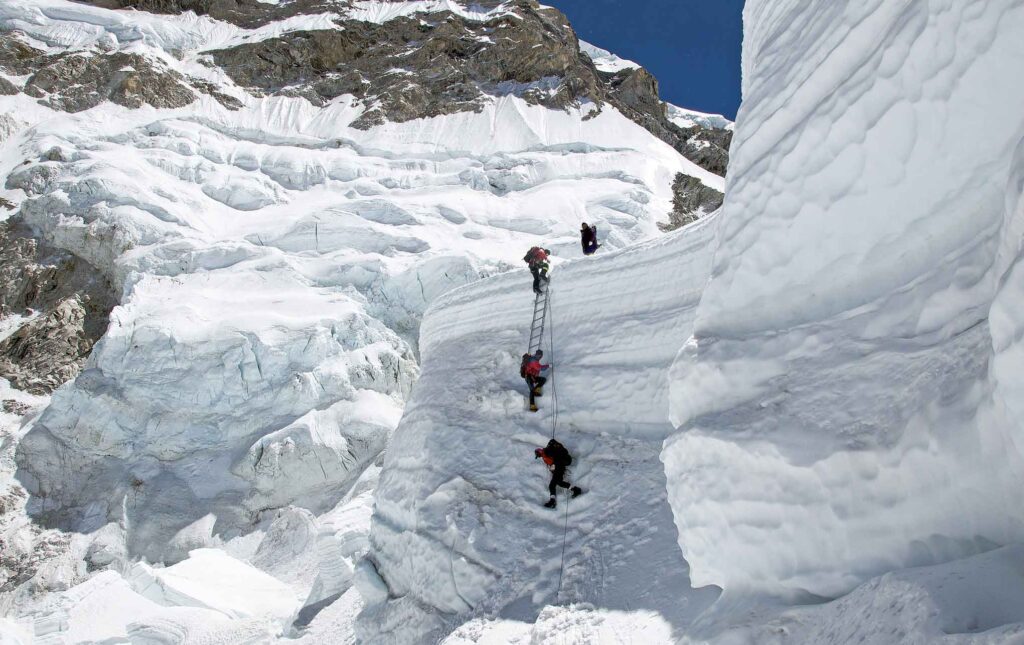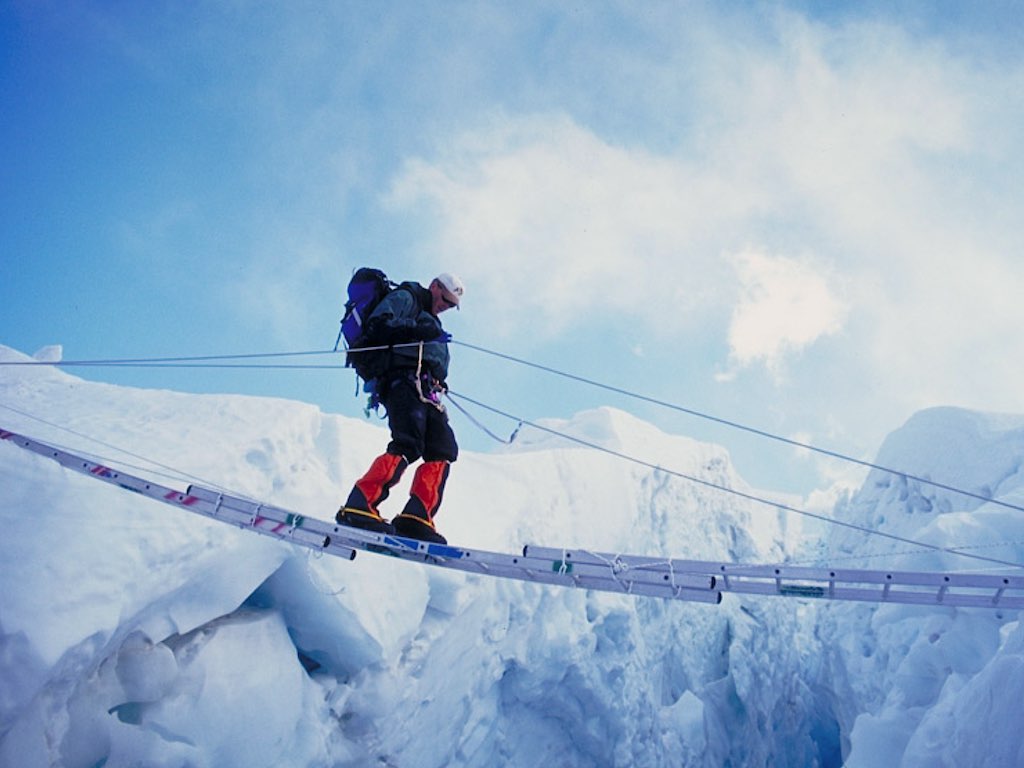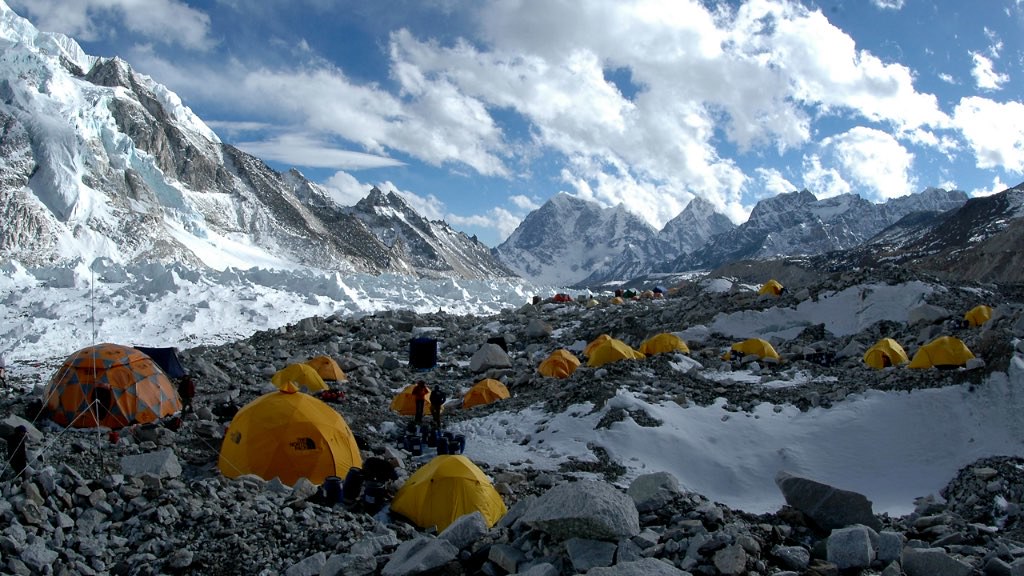Mount Everest stands at 8,848.86m (29,031.7 ft) high making it the tallest mountain in the world. It is situated at the boundary of Nepal and Tibet. But to the Nepalese people, it is called Sagarmatha, which means the goddess of the sky. It has been a challenge to any adventurer for decades. Having such a size, and, importantly, an impressive and beautiful seen, it is one of the favourites among mountaineers and tourists from different corners of the globe.
Despite the fact that mountaineering on Mount Everest has existed from the beginning of the twentieth century, the actual period of mass climbs can be considered from the first of December 1953 when the New- Zelander Sir Edmund Hillary and the Nepalese Sherpa Tenzing Norgay reached the top of Mount Everest.
It has become a giant undertaking that most people feel like undertaking the difficult and risky test of attempting to climb Mount Everest. Those long and tough treks to the top become hard to do because of weather incidences, the steep and rugged surfaces and even heights which are a problem for climbers. Most climbers ascend via two main routes: there are two routes namely the Southeast Ridge approach from Nepal while the North Ridge is from Tibet.

There are extremely demanding, both physically and mentally as climbers go above 8,000m, called the ‘death zone’. Still, the risks do not prevent thousands of people from trying to scale this mountain each year: amateurs together with professional climbers alongside those who compete with the mountain for the first time. Pressure to stand on Mount Everest, like any usual desire to feel accomplishment and adrenaline, drives people to climb. But for one to summit Mount Everest, one requires planning, training and obey the rocky nature of the Mountain.
How Many Dead Bodies Are On Mount Everest 2024.
Many people ask how many dead bodies are on Mount Everest. Current statistics show there are as many as 200 to 300 bodies on the mountain even as of 2024, the majority of which are in the extreme danger zone known as the ‘Death Zone,’ beyond the 8000-meter altitude where people cannot breathe and survive.
It is an almost impossible task to bury most of the bodies because of the massive altitude and challenging climatic conditions in the area. Most climbers who die on the mountain are never recovered because it is expensive and hazardous to retrieve the bodies from the site.
It has become a tradition to see such nicknamed ‘bodies’, for example, Green Boots and others, which serve as a sad reminder of the dangers of the trail. Since the first expedition in 1953, led by Sir Edmund Hillary and Tenzing Norgay, more than 300 climbers have lost their lives on this mountain. The leading killer factors are avalanches, falling off cliffs, and exhaustion. The majority of the calamities happen on the way down.
These corpses are constant and harsh signals to the hard-knock reality of the mountain Everest threats to climbers, especially in the death zone. Since the air at such a high altitude is thin, the lack of oxygen tricks the body into confusion, lousy judgment, and, in many cases, expiring. This is because as more people go for a climbing experience on Everest annually, more people will die. The Nepalese government recognized the 2015 avalanche caused by an earthquake that took 22 climbers’ lives as the most catastrophic incident in the mountain. Climbing Sherpas, who work with climbers, are at lower risk, while foreign climbers stand a greater chance of dying near the summit. Even with improved tools and skills in climbing and crevasses, the mountain of Everest continues to be a perilous experience for humankind.
How Many People Died On Mount Everest A Year?
Statistics show that between five and 10 people die on Mount Everest annually. The fatality ranges depending on weather conditions and traffic congestion, as well as the number of people who attempt to scale the mountain in a particular season.
For example, known from particularly fatal years, such as 2019, 11 people died from overcrowding, fatigue, and altitude. However, some years experience low fatalities owing to factors such as favourable weather or perhaps low traffic in the mountains. The main reasons behind the fatal accidents are avalanches, falls, Hypothermia, frostbite, altitude sickness, and physical exhaustion; mostly, the demise of climbers in the ‘death zone’, which is above 8,000m and hardly has any oxygen.
It may be said that with better equipment and training and guiding services, the Everest is still a hostile place that kills climbers, especially those who are inexperienced. Other climbers, including the famed Sherpas and other experienced local guides get into similar dangers, always when helping other climbers in their attempt at the summit. As more individuals venture out into Everest expeditions, deaths are still likely to be a possibility even as climbers seek safer ways to complete the trip.
How Many Dead Bodies Can You See On Mount Everest?
The experts believe that approximately 200 bodies are lying exposed on the surface of the mountain at any given time, and this number fluctuates because of the layer of snow, unfavourable climate, and rescue operations.
The majority of these remains are in the ‘Yellow Poles’ above 8,000 meters, where oxygen is very limited, plus the harsh climatic conditions cannot sustain human life. It is challenging to retrieve bodies from such high grounds, and most are left where they were when they perished to remind those who dare that mountain is not to be toyed with.
There are common instances of climbers finding bodies as they climb through specific popular routes like the Southeast Ridge or the Northeast Ridge. Readily identifiable bodies include the ill-fated climber Tsewang Paljor from India, popularly known as “Green Boots”, plying his trial along the Northeast Ridge. Other bodies are found in dangerous areas such as ‘Khumbu Iceinfall’ and near the summit of the mountain.

A few have been recovered or buried after some time, while others stay, still stuck in that particular moment. These bodies, fallen dead in the open, depict the danger that accompanies the climbing exercise, even to professional climbers in mountainous regions. To get to the top of the highest mountain, climbers have to cross these unpleasant signals.
How Many People Died On Mount Everest Daily?
It is difficult to generalize the fatality rate per season or year, but statistically, it is believed that about 5-10 climbers die annually. This is so because when the climbing season is estimated to be between one and two seasons, the number of persons that die daily during this period is less than one.
However, in especially striking calendar years, such as in 2019, when 11 climbers perished in a span of relatively a few days, the mortality rate increased, leading to cumulative deaths in days. The deaths can occur because of altitude Illness, storms, especially the Avalanche, falls and exhaustion, especially in the death zone, which is above the altitude of 8000m.
How Many People Died On Mt Everest In the 2015 Earthquake?
During the offensive 2015 catastrophic earthquake in Everest, 22 people perished on Mount Everest. The earthquake that took place on April 25, 2015, caused large avalanches on the mountain, with one of them directly destroying the base camp and killing and injuring many people. It remains to date one of the severest disasters that befell the Mount Everest region, with the highest number of victims lost in a single day.

This earthquake had a death toll that tallied more than 9000 across Nepal, the impact of which was felt by most parts of the country. The effects observed in Everest shook the image of the great mountain and combined with harsh weather conditions, search and rescue endeavours were desperate.
Death Rate Of Mount Everest
More to the point, the mortality rate among mountaineers opting for a summit on Mount Everest ranges between 1 and 2%. This rate is as a result of dividing the total number of successful summits with the total number of fatalities. And, from all the 100 mountaineers who have conquered the peak, about 1- 2 climbers perished in the process. While the first recorded fatal ascents were in the 1920s there has been over 300 known deaths on the mountain and over 11,000 successful summits recorded.
New mountaineering tools, more significant improvements in meteorological conditions, and better guides have contributed to cutting the numerical ratio in recent years. Yet the peak it remains perilous and of the 300 climbers who die each year, the majority fall in the ‘’death zone’’ over 8,000m where fatigue, hypoxia and weather rob you of your strength.
Other variables such as population density, lack of experience, and unfavourable weather circumstances can make the death rates to be different in different years. Although the percentage might be relatively low, the exposure to the various dangers inherent in mountaineering, essentially in the higher regions of Mount Everest, still remains a high risk even to those adventure seekers who prepare themselves properly for the feat.
Why Do So Many People Die In Everest?
Many people die on Mount Everest due to a combination of extreme environmental factors, physical challenges, and human errors:
1. Altitude and Oxygen Deprivation: Pressure is especially extreme at the so-called “death zone” Any altitude above 8,000 meters or 26,247 feet has low oxygen levels that climbers find hard to take. The conditions may result in hypoxia, ideally implying the suffocation of the brain and the entire body, leading to disorientation, loss of sound judgment and even death. Other conditions, such as Acute Mountain Sickness AMS and high altitude pulmonary or cerebral oedema, are also observed.
2. Harsh Weather Conditions: Facing unpredictive and severe conditions as Everest Region has got high penetrating winds, blizzards & fluctuating temperature which can even go down -40 C. This can result in frostbites, hypothermia or falling into life threatening circumstances like getting trapped in an avalanche.
3. Exhaustion: Expedition Everest entails a great deal of physical exercise especially when in the death zone. Most people go for the Thika trail in their extreme effort to get to the peak and will arrive at the top dead tired, mostly die on the way down. Fatigue raises the risk of tripping and falling, confusion, and poor after-effects in case of an emergency.
4. Avalanches and Falls: Being buried under an avalanche is one of the most common ways of dying and-during climbing seasons, most of these tragedies occur in regions such asKhumbu Icefall. This results in steep sections where falls are made a big risk due to difficult terrain on the pics.
5. Inexperience and Overcrowding: A lot of climbers go to Everest with very few or almost no acclimatization with the high altitude. Further, crowding on the mountain hikes up the chances of similar occurrences endangering the climbers, and affected by extreme weather since climbers spend more time in the Death Zone awaiting to get to the peak.
All these factors together with high probability of getting trapped in the mountain Infrequently, Everest’s fatality rate is high.
Send an Enquiry
Error: Contact form not found.
© 2025 - Himalayan Trekking and Tours (P) Ltd. All Rights Reserved.

